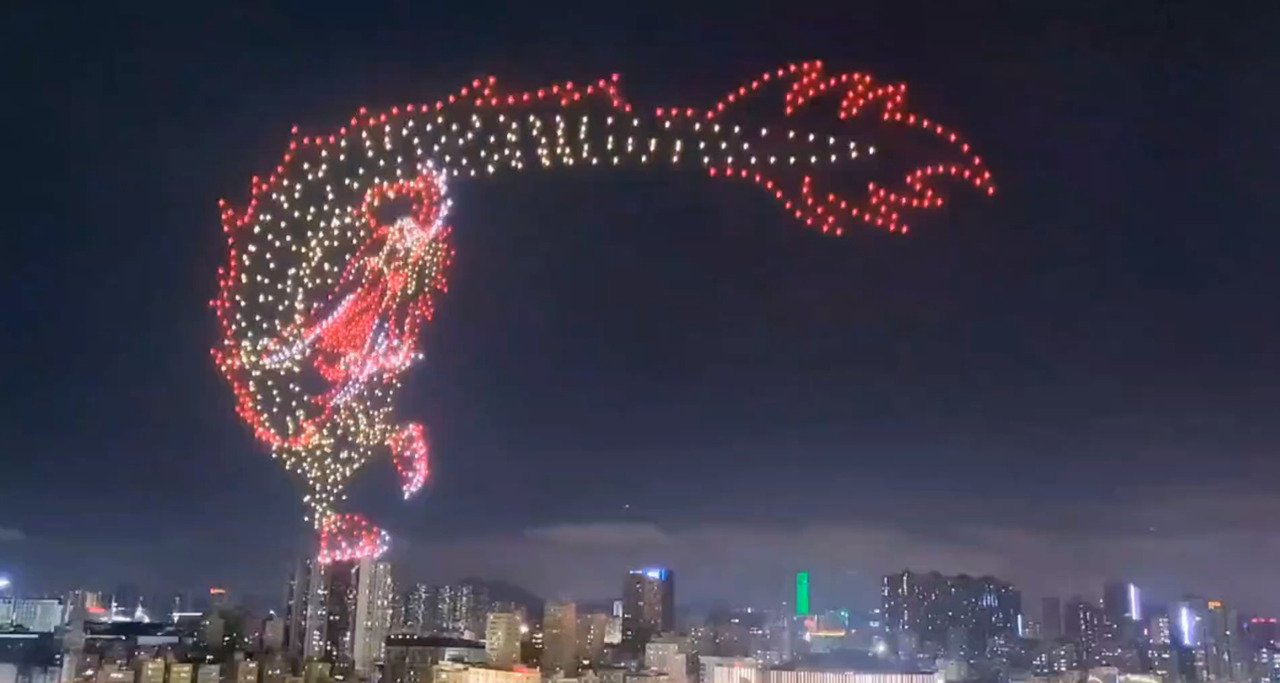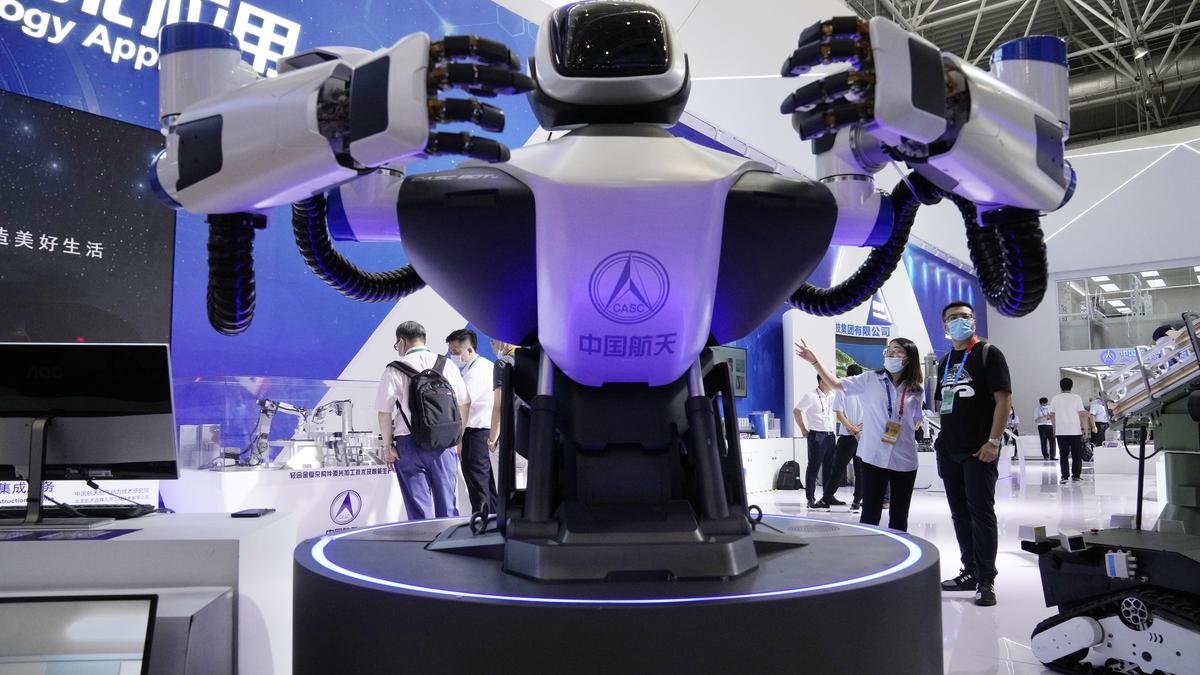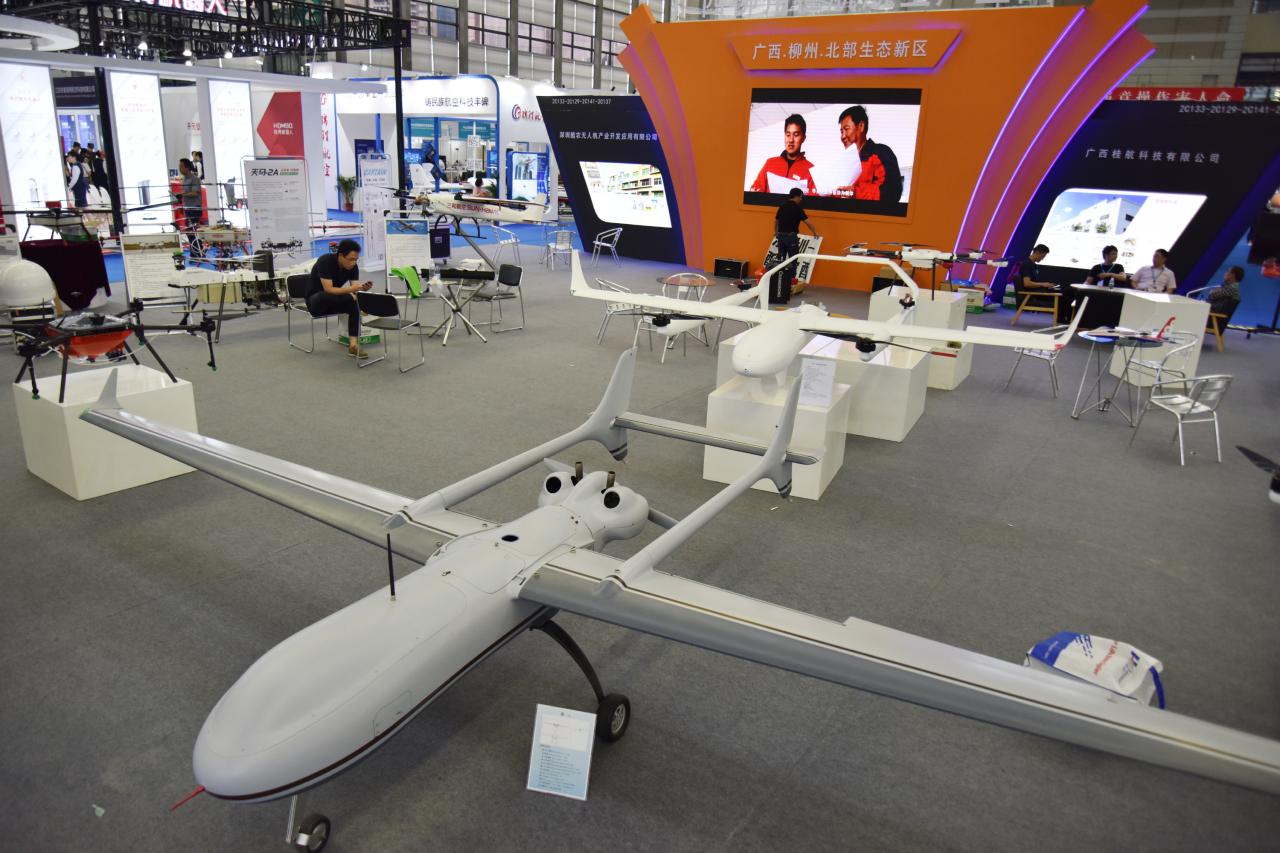China Drone Show 2035: Imagine a future where swarms of autonomous drones paint breathtaking aerial displays across China’s skies, a spectacle of technological prowess and economic might. This isn’t science fiction; it’s a projection of China’s ambitious plans for its burgeoning drone industry. We’ll explore the projected technological leaps, the economic impact, societal changes, and the regulatory landscape shaping this exciting future.
From advanced AI integration and swarm capabilities to the economic contributions and societal implications of widespread drone use, we’ll delve into the potential benefits and challenges facing China. We’ll examine how these advancements could revolutionize logistics, agriculture, and emergency services, while also addressing concerns about privacy, job displacement, and airspace management. Get ready for a fascinating look at what the future holds.
Technological Advancements in Chinese Drone Technology by 2035
By 2035, China’s drone technology is projected to experience significant leaps forward, driven by substantial investments in research and development. This advancement will encompass enhanced autonomy, sophisticated AI integration, and the deployment of increasingly complex drone swarms. These technological strides will reshape various sectors, from military operations to everyday logistics.
Projected Advancements in Drone Autonomy, AI Integration, and Swarm Technology
Autonomous flight capabilities will reach unprecedented levels. Drones will navigate complex environments with minimal human intervention, employing advanced obstacle avoidance and path planning algorithms. AI integration will enable drones to perform intricate tasks such as precision agriculture, automated inspections, and even search and rescue operations with higher efficiency and accuracy. Swarm technology, allowing coordinated operation of large numbers of drones, will enable unprecedented scale and complexity in tasks such as large-scale infrastructure monitoring or targeted delivery across vast distances.
Imagine the China Drone Show 2035: a dazzling spectacle of aerial acrobatics. But what about underwater? That’s where the innovation really shines, with advancements like the magura v5 sea drone , showing how unmanned technology is expanding beyond the skies. Think of the possibilities for coordinated underwater and aerial drone displays at future China Drone Shows – a truly breathtaking experience!
This will be comparable to, if not surpassing, the advancements seen in leading nations such as the US and Israel, but with a focus on large-scale deployment and integration within existing infrastructure.
Comparison with Other Leading Nations
While the US and Israel currently hold a technological edge in certain niche areas, such as advanced sensor technology and specific AI algorithms, China’s projected advancements will focus on large-scale integration and deployment. China’s strength lies in its ability to rapidly scale production and integrate drone technology into existing infrastructure and supply chains. This approach contrasts with the more incremental, specialized approach of some Western nations.
Potential Military and Civilian Applications
Military applications will include enhanced surveillance, precision strikes, and logistical support. Civilian applications will revolutionize logistics (faster, more efficient delivery), agriculture (precision spraying and monitoring), infrastructure inspection (bridge and pipeline monitoring), and emergency response (disaster relief and search and rescue).
Projected Drone Specifications by 2035

| Category | Flight Time (hours) | Payload Capacity (kg) | Range (km) |
|---|---|---|---|
| Surveillance | 12 | 5 | 200 |
| Delivery | 8 | 10 | 150 |
| Agricultural | 6 | 2 | 50 |
| Military (reconnaissance) | 24 | 20 | 500 |
Economic Impact of the Chinese Drone Industry in 2035

The Chinese drone industry is poised for substantial economic growth by 2035. This growth will be fueled by increased domestic demand, expanding export markets, and technological innovation. The industry’s contribution to China’s GDP is projected to increase significantly, creating numerous economic opportunities.
Imagine the China drone show 2035: a breathtaking spectacle of coordinated aerial displays. To get a taste of what’s possible, check out the incredible scale and artistry of past events, like the amazing china new year drone show , which showcases the technology’s current capabilities. These smaller shows offer a glimpse into the potential for even grander, more sophisticated performances in the future, making China drone show 2035 something truly worth anticipating.
Projected Economic Contribution to China’s GDP
While precise figures are difficult to predict, a conservative estimate suggests a contribution exceeding 1% of China’s GDP by 2035, based on current growth trajectories and projected technological advancements. This would represent a massive increase compared to its current contribution.
Major Players and Market Share
Companies like DJI, already a global leader, are expected to maintain significant market share. However, the emergence of numerous smaller, specialized firms focusing on niche applications is also anticipated. The competitive landscape will likely consolidate somewhat, with larger firms absorbing or partnering with smaller players.
Job Creation and Economic Growth Opportunities
The industry will generate a substantial number of jobs across the manufacturing, research, development, and service sectors. This will include roles in drone manufacturing, software development, pilot training, maintenance, and data analysis. The economic ripple effects will extend to related industries such as logistics, agriculture, and construction.
Challenges and Risks to Economic Growth, China drone show 2035
Potential challenges include intense competition, regulatory hurdles, and the need for skilled labor. Over-reliance on specific technologies and potential disruptions in global supply chains also pose risks. Maintaining technological leadership in the face of international competition will be crucial for continued growth.
Imagine the China Drone Show 2035: thousands of drones painting breathtaking aerial masterpieces. It makes you think about the complexities of airspace management, especially considering incidents like the devastating fullerton plane crash , which highlights the urgent need for robust safety protocols. This underscores the importance of advanced drone technology and regulation for future spectacular shows like the China Drone Show 2035.
Societal Implications of Widespread Drone Use in China by 2035
The widespread integration of drones into Chinese society by 2035 will bring about both benefits and challenges. Careful planning and regulation will be crucial to maximizing the positive impacts while mitigating potential negative consequences.
Benefits of Widespread Drone Integration
Improved logistics will lead to faster and more efficient delivery of goods and services. Precision agriculture will enhance crop yields and reduce the environmental impact of farming. Drones will play a crucial role in emergency response, providing rapid access to disaster areas and delivering vital supplies. Infrastructure monitoring will become more efficient and cost-effective.
Societal Challenges Associated with Increased Drone Use
Privacy concerns regarding surveillance capabilities will need to be addressed through robust regulations and ethical guidelines. Job displacement in certain sectors, such as delivery and inspection, is a potential concern that will require proactive measures such as retraining programs and the creation of new job opportunities in related fields.
Drone Technology Improving Infrastructure and Public Services
Drones can be used to inspect and maintain power lines, bridges, and other critical infrastructure, reducing maintenance costs and improving safety. They can also be deployed for efficient traffic management, environmental monitoring, and delivery of medical supplies in remote areas.
A Potential Future Societal Impact Scenario
One potential scenario is a highly efficient, interconnected society where drones seamlessly integrate into daily life, delivering goods, providing emergency services, and monitoring infrastructure with minimal human intervention. However, this scenario requires careful consideration of privacy and security concerns, ensuring that the benefits outweigh potential risks. A negative scenario could involve widespread misuse of drones for illegal activities or a lack of effective regulation leading to safety hazards and social unrest.
Regulatory Landscape and Safety Concerns Surrounding Drones in China by 2035: China Drone Show 2035
A robust regulatory framework will be essential to ensure the safe and responsible use of drones in China by 2035. This framework must address issues such as airspace management, cybersecurity, and data privacy.
Projected Regulatory Framework
China’s drone regulations are expected to become more comprehensive and sophisticated, incorporating international best practices while adapting to the unique needs of the Chinese context. This will involve stricter licensing requirements, designated flight zones, and robust cybersecurity protocols to prevent unauthorized access and malicious use.
Potential Safety Concerns
Airspace management will be a major challenge, requiring sophisticated systems to prevent collisions and ensure the safe integration of drones with manned aircraft. Cybersecurity threats, such as hacking and data breaches, need to be addressed through robust security measures and encryption protocols. The potential for drones to be used for illegal activities, such as smuggling or surveillance, also needs to be considered.
Comparison with Other Countries’ Drone Regulations
China’s regulations will likely be more centralized and stricter than those of some Western countries, reflecting the government’s focus on national security and social order. However, it will also need to balance these concerns with the need to foster innovation and economic growth within the drone industry.
Potential Safety Protocols and Regulations

- Mandatory drone registration and licensing
- Stricter flight restrictions in sensitive areas
- Implementation of advanced air traffic management systems
- Mandatory use of encryption and security protocols
- Establishment of clear liability frameworks for drone accidents
- Regular safety audits and inspections of drone operators
Illustrative Examples of Drone Applications in China by 2035

Three distinct applications highlight the transformative potential of drones in China by 2035. These examples showcase how drones can address specific societal needs and economic challenges.
Automated Package Delivery in Urban Centers
Small, autonomous drones (approximately 1 meter in wingspan, carrying payloads up to 5 kg) will deliver packages within designated urban areas. These drones will utilize advanced AI-powered navigation systems and obstacle avoidance technology, ensuring safe and efficient delivery. This will alleviate traffic congestion and improve delivery speed, particularly in densely populated areas. The drones will feature GPS tracking, secure locking mechanisms, and automated landing systems.
Precision Agriculture in Rural Areas
Larger, fixed-wing drones (approximately 2 meters in wingspan, carrying payloads up to 10 kg) will be used for precision spraying of pesticides and fertilizers in agricultural fields. Equipped with high-resolution cameras and sensors, these drones will analyze crop health and identify areas requiring treatment. This will reduce the amount of chemicals used, improve crop yields, and minimize environmental impact.
These drones will utilize advanced flight planning software and automated spraying systems.
Infrastructure Inspection of Bridges and Power Lines
Specialized drones equipped with high-resolution cameras, thermal imaging, and LiDAR technology will conduct routine inspections of bridges and power lines. These drones (approximately 1.5 meters in wingspan, carrying payloads up to 3 kg) will autonomously navigate complex structures, identifying potential damage or defects. This will reduce the need for manual inspections, improving safety and efficiency. The drones will utilize advanced data analysis software to generate detailed reports for engineers.
A Large-Scale Drone Show in China in 2035
Imagine a breathtaking spectacle over the Huangpu River in Shanghai: thousands of drones, each equipped with customizable LED lights, forming intricate patterns and three-dimensional shapes in the night sky. Synchronized movements, coordinated by sophisticated AI algorithms, create a dazzling light show that seamlessly blends technology with art, showcasing China’s advancements in drone technology and its integration into daily life.
The scale of the display would dwarf any previous drone shows, with a breathtaking combination of color, light, and motion, demonstrating the potential of large-scale drone coordination for both entertainment and potentially even large-scale communication or advertising.
Ending Remarks
China’s drone industry in 2035 promises a spectacular transformation, blending technological innovation with economic growth and societal impact. While challenges remain in areas like regulation and safety, the potential benefits across diverse sectors are immense. The “China Drone Show 2035” isn’t just a hypothetical event; it’s a vision of a future where drones play a pivotal role in shaping China’s landscape and global standing.
The advancements and implications we’ve explored highlight both the exciting possibilities and the crucial need for responsible development and regulation to ensure a safe and beneficial integration of this transformative technology.
Helpful Answers
What specific types of drones are projected to be dominant in China by 2035?
Predictions point to a rise in autonomous delivery drones, advanced agricultural drones with precision spraying capabilities, and sophisticated surveillance drones with enhanced AI-powered image recognition.
What are the major environmental concerns surrounding the increased use of drones in China?
Potential concerns include noise pollution from large drone swarms, battery waste disposal, and the impact on wildlife habitats, especially for agricultural drones.
How might China’s drone regulations compare to those of the EU or the US by 2035?
It’s likely that China’s regulations will continue to evolve, potentially becoming more stringent in areas like data privacy and airspace management, but perhaps less restrictive in terms of commercial drone operations compared to some Western nations.
